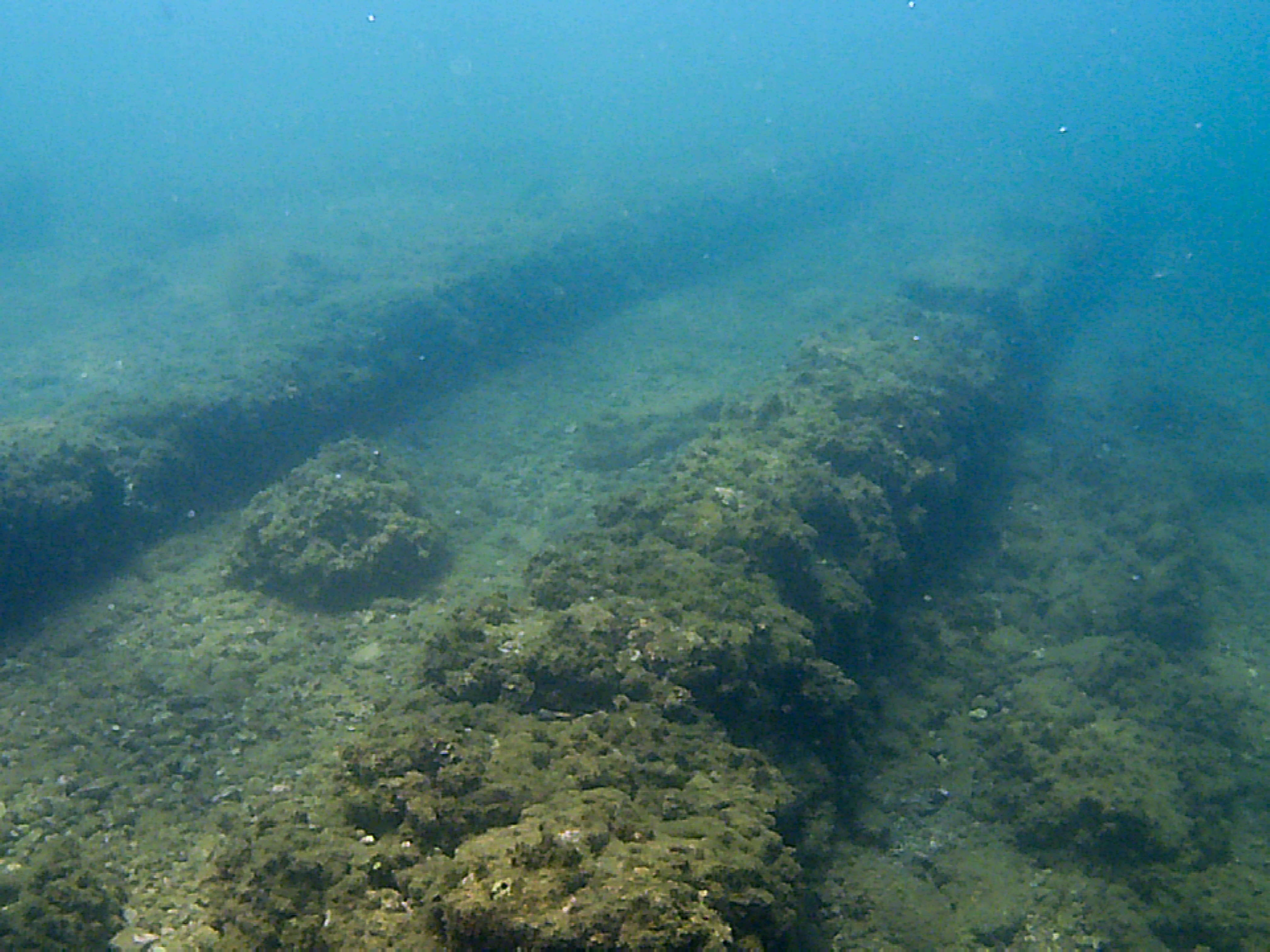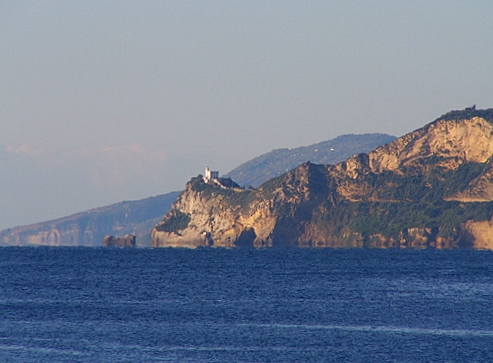Portus Julius on:
[Wikipedia]
[Google]
[Amazon]
(alternatively spelled in the Latin ) was the first harbour specifically constructed to be a base for the


 During the civil wars from 39 BC after the
During the civil wars from 39 BC after the
 Shortly after the successful conclusion of the war with Sextus, the first Portus was abandoned, owing to accumulations of silt that compromised its navigability. With secrecy no longer a requirement, nearby
Shortly after the successful conclusion of the war with Sextus, the first Portus was abandoned, owing to accumulations of silt that compromised its navigability. With secrecy no longer a requirement, nearby
Roman
Roman or Romans most often refers to:
*Rome, the capital city of Italy
*Ancient Rome, Roman civilization from 8th century BC to 5th century AD
*Roman people, the people of Roman civilization
*Epistle to the Romans, shortened to Romans, a letter w ...
western naval fleet
A fleet or naval fleet is a large formation of warships – the largest formation in any navy – controlled by one leader. A fleet at sea is the direct equivalent of an army on land.
Purpose
In the modern sense, fleets are usually, but no ...
, the . The port was located near Baiae
Baiae (; ) was an ancient Roman town situated on the northwest shore of the Gulf of Naples and now in the ''comune'' of Bacoli. It was a fashionable resort for centuries in antiquity, particularly towards the end of the Roman Republic, when i ...
and protected by the Misenum
Miseno is one of the ''frazione, frazioni'' of the municipality of Bacoli in the Italy, Italian Province of Naples. Known in ancient Roman times as Misenum, it is the site of a great Roman port.
Geography
Nearby Cape Miseno marks the northw ...
peninsula at the north-western end of the Gulf of Naples
The Gulf of Naples (), also called the Bay of Naples, is a roughly 15-kilometer-wide (9.3 mi) gulf located along the south-western coast of Italy (Metropolitan City of Naples, Campania region). It opens to the west into the Mediterranean ...
. Portus Julius was named in honour of Octavian
Gaius Julius Caesar Augustus (born Gaius Octavius; 23 September 63 BC – 19 August AD 14), also known as Octavian (), was the founder of the Roman Empire, who reigned as the first Roman emperor from 27 BC until his death in ...
's great-uncle and adoptive father, Julius Caesar
Gaius Julius Caesar (12 or 13 July 100 BC – 15 March 44 BC) was a Roman general and statesman. A member of the First Triumvirate, Caesar led the Roman armies in the Gallic Wars before defeating his political rival Pompey in Caesar's civil wa ...
and the Julian clan.
Construction of Portus Julius


 During the civil wars from 39 BC after the
During the civil wars from 39 BC after the Pact of Misenum
The Pact of Misenum was a treaty to end the naval blockade of the Italian Peninsula during the war between the Second Triumvirate and Sextus Pompey. Signed in 39 BC, the triumvirs allowed Sextus Pompeius to retain his control of Sicily and S ...
, Octavian
Gaius Julius Caesar Augustus (born Gaius Octavius; 23 September 63 BC – 19 August AD 14), also known as Octavian (), was the founder of the Roman Empire, who reigned as the first Roman emperor from 27 BC until his death in ...
urgently needed a safe naval harbour in which to build and train a fleet for a campaign against Sextus Pompeius
Sextus Pompeius Magnus Pius ( 67 – 35 BC), also known in English as Sextus Pompey, was a Roman military leader who, throughout his life, upheld the cause of his father, Pompey the Great, against Julius Caesar and his supporters during the la ...
(younger son of Pompey
Gnaeus Pompeius Magnus (; 29 September 106 BC – 28 September 48 BC), known in English as Pompey ( ) or Pompey the Great, was a Roman general and statesman who was prominent in the last decades of the Roman Republic. ...
the Great) who was making frequent raids on Italy and upon the shipping routes for Rome's grain supply. To run the operation, Octavian turned to his closest and most able associate, Marcus Agrippa and his chosen architect Cocceius.
Agrippa knew that Lake Avernus
__NOTOC__
Lake Avernus () is a volcanic crater lake located in the Avernus crater in the Campania region of southern Italy, around west of Pozzuoli. It is near the volcanic field known as the Phlegraean Fields (') and comprises part of the wide ...
was invisible from the surrounding sea and bay waters, and reasoned that the fleet's existence there could be kept secret from Sextus' navy until it was ready to strike. Agrippa's plan, executed from 37–36 BC, was to dig a canal to connect Lake Avernus to Lucrinus Lacus (Lake Lucrino) and a second, shorter canal with a hidden entrance between Lake Lucrino and the sea. A long road access tunnel, the Grotta di Cocceio, was also dug from Lake Avernus north to the town of Cumae
Cumae ( or or ; ) was the first ancient Greek colony of Magna Graecia on the mainland of Italy and was founded by settlers from Euboea in the 8th century BCE. It became a rich Roman city, the remains of which lie near the modern village of ...
. The engineering challenges were enormous and the achievement momentous enough that both Virgil
Publius Vergilius Maro (; 15 October 70 BC21 September 19 BC), usually called Virgil or Vergil ( ) in English, was an ancient Rome, ancient Roman poet of the Augustan literature (ancient Rome), Augustan period. He composed three of the most fa ...
and Pliny mention the harbour as one of the man-made wonders of Italy.
The port was defended by a long sea wall from Punta dell'Epitaffio to Punta Caruso on the sandy edge of Lake Lucrinus and on which the Via Herculanea passed. In the wall was a channel that allowed ships to enter the Lucrino basin (and road traffic crossed over a wooden bridge). The outer harbour behind Cape Misenum may have served the active vessels of the Roman navy and provided room for training exercises, while its inner counterpart was probably designed for the reserve fleet and for repairs, and as a refuge from storms.
Agrippa's innovative strategy was validated as construction of the new fleet remained unknown to Sextus' roving fleet. When it was complete, fully outfitted and trained, Agrippa's fleet left its secret base and defeated Sextus at the Battle of Naulochus (off the north coast of Sicily), the decisive naval battle of the campaign.
Abandonment and new harbour at Misenum
 Shortly after the successful conclusion of the war with Sextus, the first Portus was abandoned, owing to accumulations of silt that compromised its navigability. With secrecy no longer a requirement, nearby
Shortly after the successful conclusion of the war with Sextus, the first Portus was abandoned, owing to accumulations of silt that compromised its navigability. With secrecy no longer a requirement, nearby Misenum
Miseno is one of the ''frazione, frazioni'' of the municipality of Bacoli in the Italy, Italian Province of Naples. Known in ancient Roman times as Misenum, it is the site of a great Roman port.
Geography
Nearby Cape Miseno marks the northw ...
became home to a second and larger version of the naval base in 12 BC. The area of the port returned to being a sacred place of infernal deities and thermal treatments, as well as a place of luxurious residences. At the end of the fifth century the breakwater of Portus Iulius became submerged due to Bradyseism.
The Romans built new breakwaters near Misenum
Miseno is one of the ''frazione, frazioni'' of the municipality of Bacoli in the Italy, Italian Province of Naples. Known in ancient Roman times as Misenum, it is the site of a great Roman port.
Geography
Nearby Cape Miseno marks the northw ...
and the base was fed by the Aqua Augusta aqueduct which also supplied Cumae, Neapolis, Pompeii
Pompeii ( ; ) was a city in what is now the municipality of Pompei, near Naples, in the Campania region of Italy. Along with Herculaneum, Stabiae, and Villa Boscoreale, many surrounding villas, the city was buried under of volcanic ash and p ...
and other towns around the bay.
Because of its location, the area controlled the entire Italian west coast, the islands and the Straits of Messina
The Strait of Messina (; ) is a narrow strait between the eastern tip of Sicily ( Punta del Faro) and the western tip of Calabria ( Punta Pezzo) in Southern Italy. It connects the Tyrrhenian Sea to the north with the Ionian Sea to the south, wi ...
.
Present state
The waters of original Portus Julius may still be seen today, though much smaller since one of the lakes of the Roman port, Lake Lucrino, was greatly reduced in size by the appearance of a large volcanic hill in the middle of the lake in the 16th century, a hill now called ("new mountain"), and by the sinking of the coastline. The outer parts of the Portus are now about 5 m under the sea surface due to volcanic Bradyseism which over the centuries has caused the land to subside; some of the port may be seen from glass-bottom boats or by scuba-diving.Scognamiglio, E., Nuovi dati su Baia sommersa, Archeologia Subacquea III, 47–55. 2002See also
*List of Roman cisterns
The list of Roman cisterns offers an overview over Ancient Rome, Ancient Roman cisterns. Freshwater Reservoir, reservoirs were commonly set up at the termini of Roman aqueduct, aqueducts and their branch lines, supplying urban households, Villa ...
*Roman navy
The naval forces of the Ancient Rome, ancient Roman state () were instrumental in the Roman conquest of the Mediterranean Basin, but it never enjoyed the prestige of the Roman legions. Throughout their history, the Romans remained a primarily land ...
*Nemi ships
The Nemi ships were two ships, of different sizes, built under the reign of the Roman emperor Caligula in the 1st century AD on Lake Nemi. Although the purpose of the ships is speculated upon, the larger ship was an elaborate floating palace, w ...
*Caligula's Giant Ship
Caligula's "Giant Ship", also known as the "Round Ship", was an List of world's largest wooden ships, extremely large barge, the ruins of which were found during the construction of Rome's Leonardo da Vinci International Airport in Fiumicino, Ita ...
*Classis Britannica
The ''Classis Britannica'' (literally, ''British fleet'', in the sense of 'the fleet in British waters' or 'the fleet of the province of Britannia', rather than 'the fleet of the state of Britain') was a provincial naval fleet of the navy of an ...
* Classis Flavia Moesica
* Classis Ravennas
References
* Aucelli PPC et al., Ancient Coastal Changes Due to Ground Movements and Human Interventions in the Roman Portus Julius (Pozzuoli Gulf, Italy): Results from Photogrammetric and Direct Surveys. Water. 2020; 12(3):658. https://doi.org/10.3390/w12030658 https://www.mdpi.com/2073-4441/12/3/658# {{Archaeological sites in Campania 39 BC 30s BC establishments 1st-century BC establishments in the Roman Republic Military of ancient Rome Navy of ancient Rome Roman sites of Campania Ancient Roman buildings and structures in Italy Shipyards of Italy Archaeological sites in Campania Ancient Roman buildings and structures in Pozzuoli Roman harbors in Italy Phlegraean Fields Marcus Vipsanius Agrippa